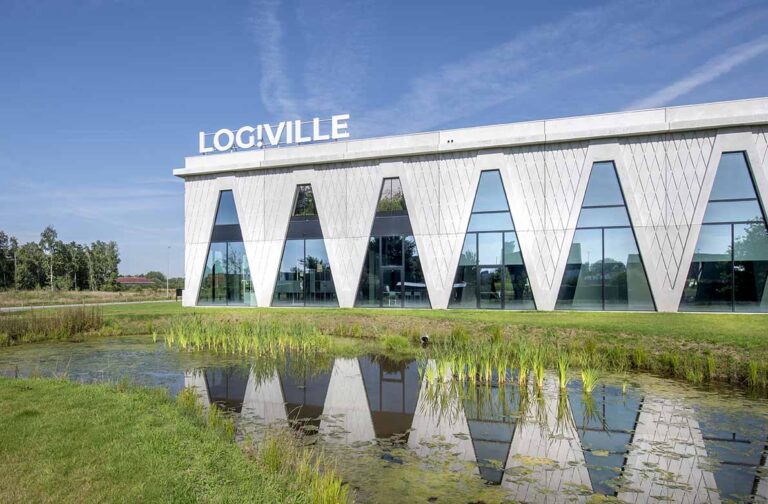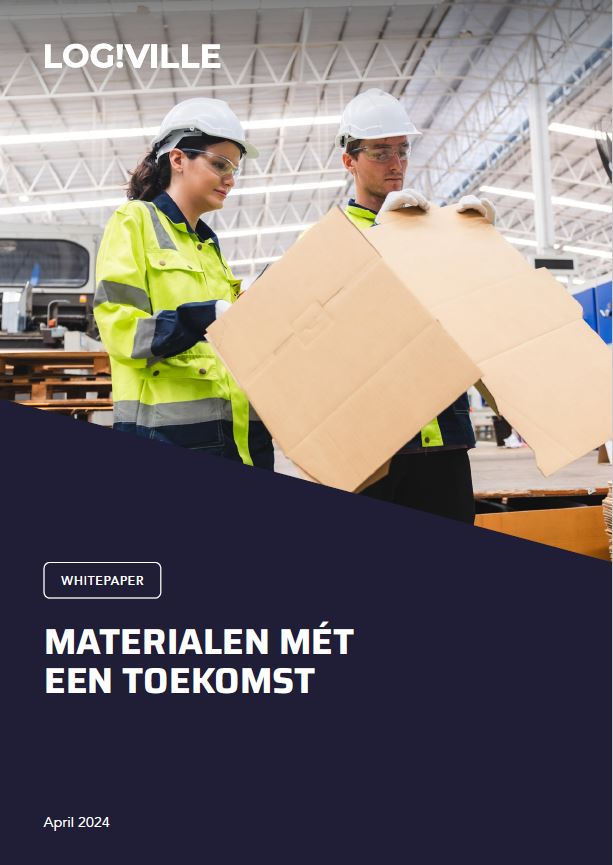
Over the past few years, the concept of Artificial Intelligence (AI) has become a common topic of conversation when talking about the future of logistics. There is, however, a very thin line between excitement and exaggeration, between innovation and hype. So, is AI in logistics more than simply a buzzword or will it, just like the over-hyped blockchain a few years ago, fail to live up to expectations?
Blockchain in logistics was considered a ‘flop’ for various reasons. Firstly, the complexity of the technology is a genuine obstacle to its large-scale adoption. Secondly, the costs and efficiency of blockchain transactions were a great challenge. Transaction costs were high and the speed of the transactions was not always appropriate for rapid logistics processes. This made it difficult to realise the potential benefits compared to existing systems. There was also a lack of clear and standardised protocols and regulations which led to a sense of uncertainty and resistance to further adoption; the logistics sector was hesitant to fully embrace a technology that was relatively new and unproven in terms of delivering added value.
By contrast, AI does have the potential to be successful in logistics and has already demonstrated clear benefits, including improvements in efficiency, cost savings and predictive analyses. The technologies behind AI, such as machine and deep learning, have developed rapidly and can tackle complex logistical challenges. Moreover, there is a great amount of data available in the logistics sector, which enables AI to generate valuable insights.
Along with the lessons learnt from the challenges presented by blockchain in the sector, with targeted implementation and a strategic approach, AI could transform logistics and provide considerable advantages.
Data analysis
What you see above, is text generated by ChatGPT. The incredible success of this in just a few weeks has astonished everyone and created an almost unbelievable interest in AI. Admittedly, certain passages are a little superficial. But the words rolled out – in clear Dutch – in just 20 seconds. Why? Well, probably because ChatGPT could predict what I was looking for based on previous questions and interactions. And that prediction – of the right stocks, of transport capacity and so on – is one of the crucial aspects in the logistics industry.
But what is AI? The term refers to systems and technologies that enable computers and machines to mimic human intelligence and make decisions based on data analysis. AI encompasses various technologies such as machine learning, deep learning, reinforcement learning, Natural Language Processing, computer vision and a few more.
Prediction is crucial…
These various ‘intelligent’ technologies enable highly diversified applications in the logistics sector and some of them are no longer a matter from science fiction. We just haven’t quite realised it yet. An example from our daily lives is the navigation system in your car, with Waze being the superior development which allows AI to make real-time prediction adjustments.
Predictive analysis is one of the clearest applications of AI in logistics. By using advanced algorithms and machine learning techniques, logistics companies can analyse historical data and predict future trends and patterns. This, in turn, enables them to optimise stock management, better predict demand, plan capacity more efficiently and define transport routes and arrival times more accurately.
Another related application in the warehouse is predictive maintenance: AI analysis of sensor data in warehouse equipment could identify maintenance needs in advance and prevent breakdowns, allowing unplanned standstills to be avoided.
…but optimisation is vital too
Most of the other AI applications in a warehouse also serve to optimise efficiency. Algorithms determine the most efficient routes for order-pickers through the warehouse, allowing time taken and distance covered to be minimised; they are also used to dictate the most efficient warehouse layout, including the installation of racking and workstations.
AI-driven systems can also help to optimise warehouse activities, such as job planning, task allocation and resource management.
Control and interaction
Another interesting function of AI in the warehouse is quality control, using machine vision systems that inspect products and detect defects or issues. These can also count (and photograph) the number of items in a box to prevent fraud upon receipt.
AI-driven speech technologies are also a growing success. Natural Language Processing (NLP), whereby the computer better understands and interprets human language, enables speech-driven interactions for tasks such as order processing and providing instructions to employees.
AI also comes with disadvantages
The list of these AI applications and their advantages is not exhaustive; there are many others and plenty more applications will also be developed in the future. AI is effectively opening new doors for efficiency, optimisation and customer focus and has the potential to bring about considerable improvements (and changes) in the logistics sector. However, will AI be revolutionary in the sector? Well, that is harder to predict.
AI also comes with disadvantages. The implementation of AI technologies can go hand-in-hand with considerable costs (development and purchasing of the necessary technology, attracting specialists, training staff, and so on). Furthermore, integrating AI systems into existing processes and systems so they can work together will be a highly complex process in itself.
The use of AI also generates ethical questions, particularly when it comes to autonomous decision-making, and we must also think about who should take responsibility when the AI system makes mistakes.
Quality of data is vital
The biggest disadvantage is the reliance on data quality because analyses and predictions simply cannot be accurate without high-quality data. If the quality of the data is inadequate, you could end up with inaccurate results and, in turn, inappropriate decisions. In other words, it will be a challenge to gain access to relevant and up-to-date data, particularly if the various sources are spread across different systems.
Another great obstacle to the broader application of AI in logistics is that AI algorithms work on the basis of data from the past. ‘If the current situation differs, it will become useless and this is an important issue because the logistics world is an extremely volatile, uncertain and rapidly changing environment. In this type of environment, AI is less practical,’ Jack van der Veen, professor of Supply Chain Management at the Neyenrode Business University explains.
It is a valid point; how useful is the data from the past few years, when you consider the lockdowns, the Suez Canal problems, and the consequences of the war in Ukraine, just to name a few. In unstable conditions, the relevance and practicality of AI as a tool for optimising stock management, for example, is considerably reduced.
However, even when the situation is stable, there are other risks associated with AI when it comes to predictive analysis. According to Guilhaume Leroy-Meline from IBM Consulting France, there is also a risk of bias. ‘AI learns data from the past to predict the future and there is, therefore, a risk that it might think ‘That’s how we did it in the past, so that will work in the future too.’ This is one of those situations where human intelligence and creativity are incredibly important, so we need people to monitor potential bias in the data that is used to train AI,’ he adds.
Conclusion
Although AI certainly relates to challenges in warehouse logistics, including data quality, the cost of implementation, and integration with existing systems, it is important not to overlook the advantages and potential. This technology is evolving rapidly and will become increasingly accessible for businesses of various sizes. With cloud computing and AI-as-a-Service-models, even SMEs could utilise the options without having to invest in expensive hardware or major IT infrastructure.
Although the adoption of AI in the sector (for the time being?) is not particularly broad, various applications are already used in practice to generate tangible advantages and these provide a textbook of lessons learned for future applications.
AI in warehouse logistics is no longer a dot on the horizon and will probably not suffer from the hype generated around blockchain. However, it stands to reason that doubt still exists and the need for relevance and (primarily) reliable data is clear. Many of these doubts, however, are often driven by the fact that most of us struggle to understand how AI works. With this in mind, maybe we should compare it to the internet. You probably don’t understand how that works either but you certainly couldn’t live without it. AI will likely follow the same path.



